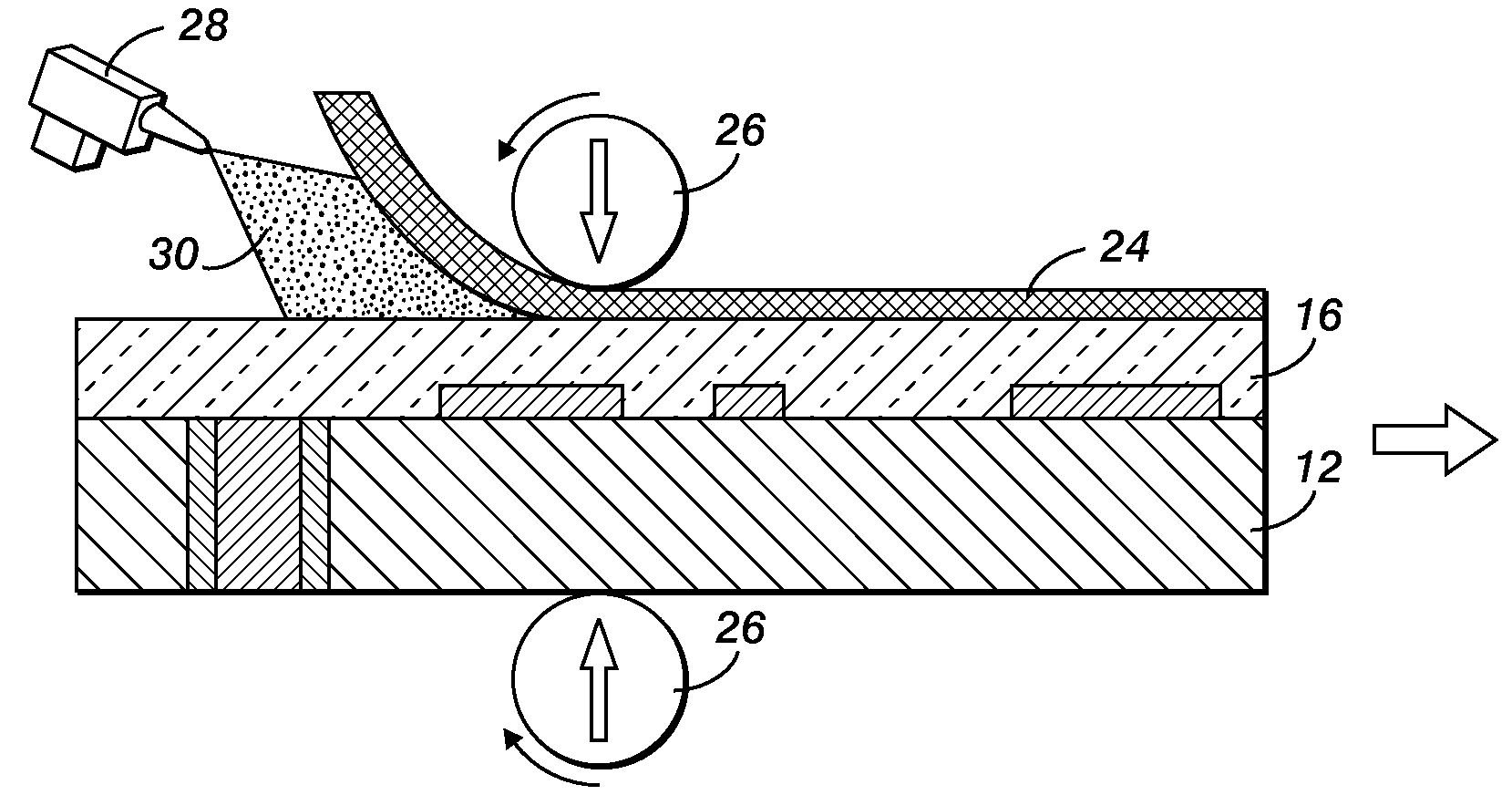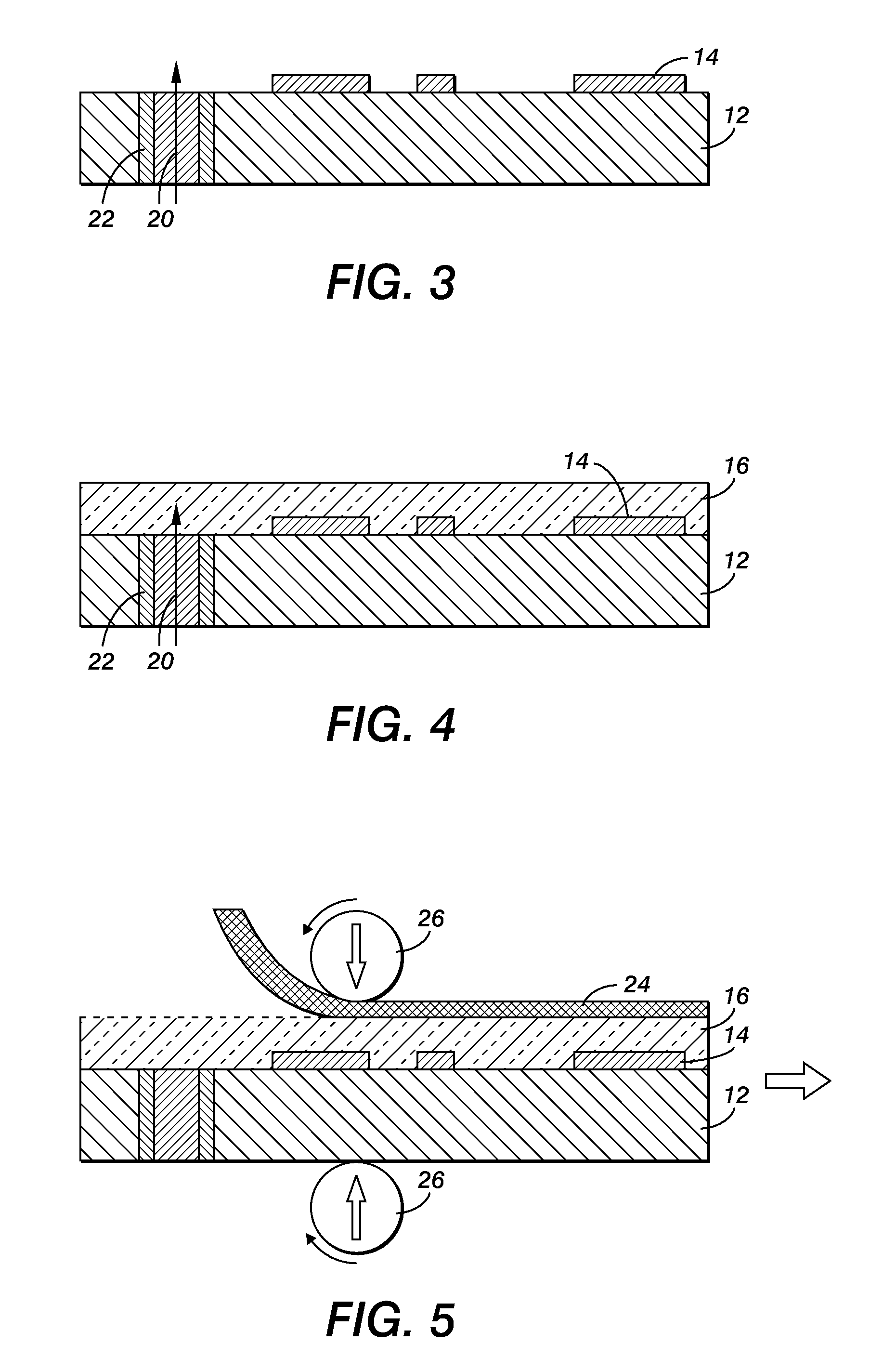Lamination for Printed Photomask
a printed circuit board and photomask technology, applied in the field of printed circuit board manufacturing, can solve the problems of manufacturers using expensive alignment tools and fixtures, manufacturers reducing the cost of manufacturing, so as to avoid adding to the cost and time of production.
- Summary
- Abstract
- Description
- Claims
- Application Information
AI Technical Summary
Benefits of technology
Problems solved by technology
Method used
Image
Examples
Embodiment Construction
[0037]Described in the following section are specific steps for the formation of a printed photomask, and the production of structures formed with said mask. The printed photomask is formed on a thin film carrier, temporarily applied to the structure being masked. An improved process for the formation of printed circuit boards is thereby enabled.
[0038]With reference to FIGS. 1 and 2, there is shown therein an example of a printed circuit board 10 of a type which may be manufactured according to the present invention. Printed circuit board (or PCB) 10 consists of a substrate 12 such as a woven / laminated fiberglass material. The substrate is rigid and can be drilled, cut or machined. Applied to the substrate is a patterned network of conductive electrical interconnections, for example traces 14. While beyond the scope of this disclosure, traces 14 are typically photolithographically patterned copper applied to the surface of substrate 12 as well understood in the art.
[0039]Applied ove...
PUM
 Login to View More
Login to View More Abstract
Description
Claims
Application Information
 Login to View More
Login to View More - R&D
- Intellectual Property
- Life Sciences
- Materials
- Tech Scout
- Unparalleled Data Quality
- Higher Quality Content
- 60% Fewer Hallucinations
Browse by: Latest US Patents, China's latest patents, Technical Efficacy Thesaurus, Application Domain, Technology Topic, Popular Technical Reports.
© 2025 PatSnap. All rights reserved.Legal|Privacy policy|Modern Slavery Act Transparency Statement|Sitemap|About US| Contact US: help@patsnap.com



